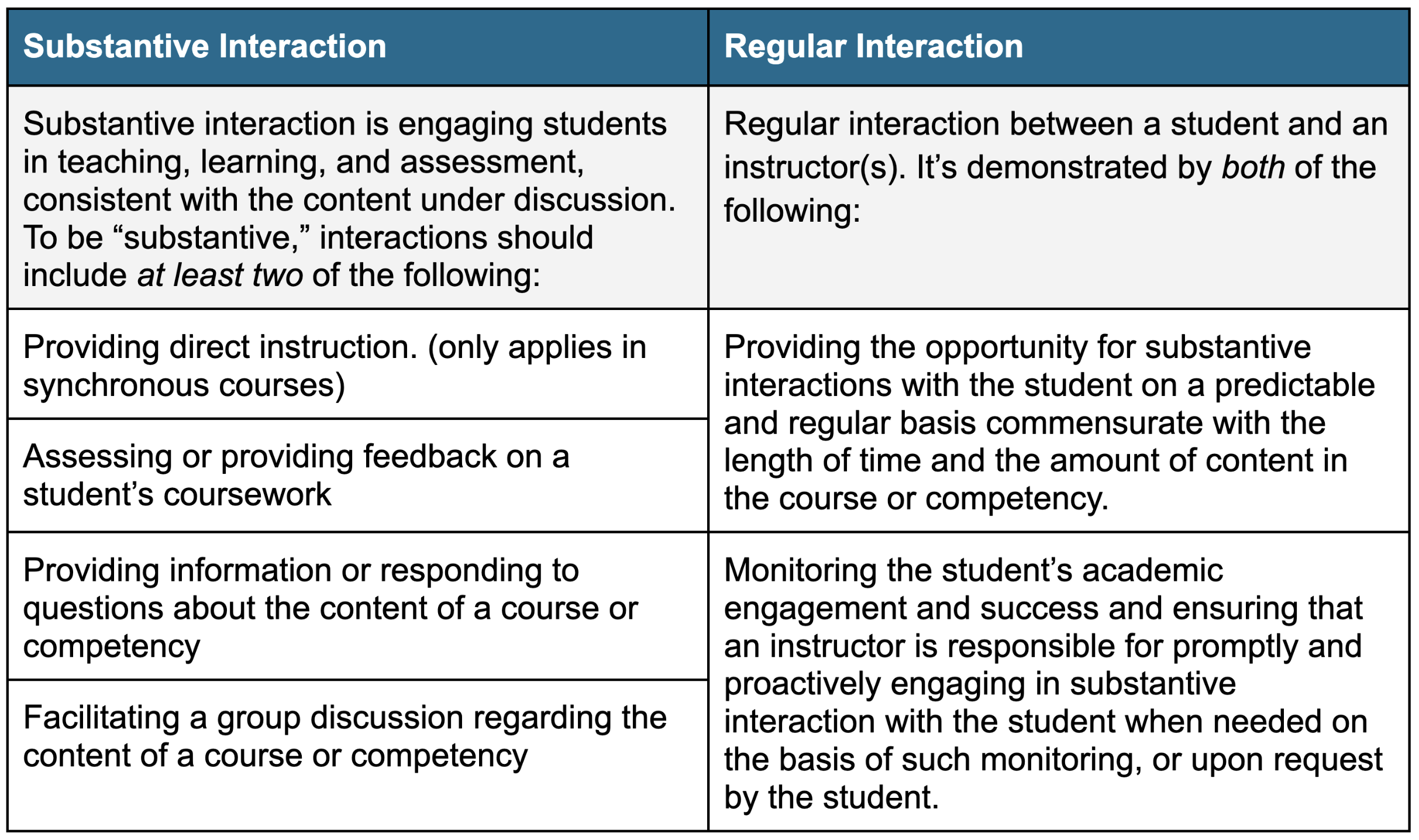
Aloha kākou!
Over the summer, I had the opportunity to collaborate with colleagues from ACCJC member institutions to create new materials focused on Regular Substantive Interaction (RSI), and I wanted to share a resource that may be especially helpful to those teaching in an online modality…
Context: In response to some changes in federal requirements, our accreditors must now verify certain aspects of RSI in distance education courses at member institutions. Therefore, a new DE review protocol addendum, accreditation review tool, and continuous improvement rubric have been developed and will be piloted this spring by ACCJC as part of the accreditation renewal process.
Defining RSI: Regular substantive interaction (RSI) between instructors and students is critical to success in online learning. It can be broken down into two parts:

Value for DE Faculty: While I always think it’s helpful to understand accreditation requirements, my primary reason for sharing is that I believe that one tool in particular could be very useful to you.
Can’t Stress This Enough: The Pilot Quality Continuum Rubric is NOT an instrument that will be used by our college for reviewing or evaluating courses – it’s not even a tool that is intended for use by ACCJC to evaluate individual instructors or courses. (I literally drafted the second page and included a “What the Quality Continuum Rubric for Distance Education is not” section just to emphasize this!). It is, however, in my opinion, a helpful way to understand the depth and quality of your current RSI strategies and how you might be able to make them even more robust and impactful.
Please take a look when you can – the rubric itself is just 2 pages and makes it easy to use for self-reflection. I hope you’ll find it helpful as you teach this semester and plan for spring!
More Info About the Accreditation Aspect: If you’re interested in learning more and providing feedback on not only this document but also the protocol addendum and review tool that will be piloted by ACCJC in the Spring to review DE courses as part of the accreditation process, please feel free to check them out here and submit your feedback to ACCJC prior to Nov 15.
If you have any questions, please shoot me an email – I’d be happy to chat about any of the topics covered here or to support you with RSI or any other instructional design goals you may have.
Mahalo for all that you do!
Jamie,
One of your friendly Kapi‘olani CC instructional designers 🤓
